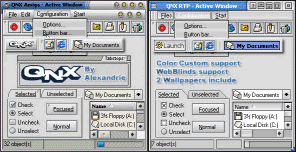

Now imagine calling someone to discuss something.

Person A checks every minute, so it takes another 30 seconds to get the e-mail and 1 second for the download. B sends the reply out again (another 2 seconds). Let’s say that takes 10 seconds (very optimistic). Then person B has to open it, read it and reply to it. Getting the e-mail from the server will take another second. However, because person B only checks once a minute, it will take 30 seconds (on average) for the next check. Transmission will likely be quick, let’s say 2 seconds. Say person A sends an e-mail to person B.

Even then, it will take more than a minute to get a reply from one person to the other.

However, let’s assume the optimal case: two people with fast, dedicated connections, both online, both checking their e-mail every minute. Besides being dangerous (because your password is transmitted in plain text each time, and so theoretically is a very easy target for hackers), it requires everyone to be online all the time. But few people check their e-mail every minute. Pure transmission speeds often aren’t the problem. With e-mail, it usually takes at least several minutes for one message to travel from one person to the other. Wait a minute, didn’t I just praise e-mail for its speed? Yes, compared to snail mail. Two disadvantages of e-mail stand out: its slowness and the lack of instant feedback. Yet e-mail isn’t perfect (and I don’t mean the lack of a personal touch-and no, HTML e-mail doesn’t fix that!). E-mail was one of the first applications on the Internet, and its benefits quickly become clear: fast and convenient transmission (nearly free of charge), the ability to send (or forward) the same information to multiple people with marginal effort, and much more make e-mail a sure win over traditional “snail mail.” With e-mail, it takes only minutes to send a letter, compared to days or weeks for postal mail. But the keys are often reliability and efficiency (and sometimes security). The information may be pictures, movies, programs, text, credit card information, or simple messages. The Internet is about the efficient and reliable transmission of information among many interacting parties. Requirements: Mac OS 8 or later, Internet connection.


 0 kommentar(er)
0 kommentar(er)
